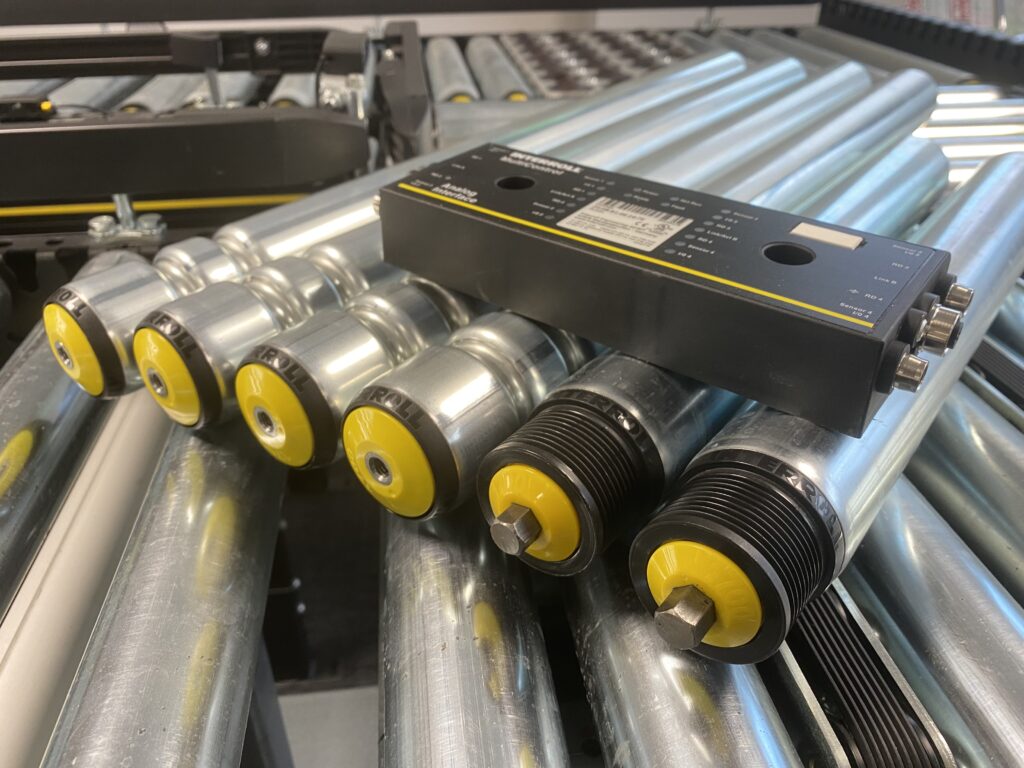Conveyor Maintenance and Success in Ecommerce
18th March 2024

Ed Wainman, Aftersales Manager at Conveyor Systems Limited (CSL) explores the vital role conveyor maintenance has to play in the burgeoning ecommerce industry and gives his top tips for developing a fuss-free and effective maintenance schedule.
Conveyor systems are the lifeblood of any ecommerce distribution centre, 3PL, or warehouse. They enable the efficient movement of goods through the facility, connecting various processes and ensuring that orders are fulfilled on time. Without proper maintenance, these systems can break down, causing delays, potentially amounting to thousands of pounds of lost revenue, as well as damage to the company’s reputation due to late deliveries. In some cases, even the products being transported can be damaged. The importance of maintenance to conveyor systems cannot be underestimated, as it directly impacts the bottom line of any logistics operation in the UK.
Consistent maintenance of the whole system, component replacements, and timely repairs ensure that your conveyor system operates at peak efficiency and in a safe manner, allowing warehouses and distribution centres to maintain high productivity levels.
Looking after a conveyor system is rather like looking after your car. Regular servicing can significantly extend the life of conveyor equipment, protecting your investment and preventing the need for costly replacements. With regular maintenance the life-span of your system could be significantly extended by up to 10 years, resulting in an increase in the return on investment.
The bigger picture
Looking at the significance of conveyor systems to the wider global economy, the UK is a major player in the ecommerce and logistics market, thanks to its strategic geographical location, advanced infrastructure, and strong digital economy. The sector is estimated to be worth over £120 billion, employing more than 2.7 million people across its various sub-sectors, including warehousing, transportation, and supply chain management.
Conveyor systems play a vital role in meeting the growing demand for efficient and reliable supply chain solutions in the UK’s ecommerce and logistics industry. Streamlining warehouse operations by automating the movement of goods means that the need for manual labour is reduced and productivity is increased. As the industry evolves and competition intensifies, the importance of maintenance to conveyor systems will only continue to grow. By keeping these systems in optimal condition, businesses can gain a competitive edge and ensure their logistics operations remain highly efficient, dependable, and cost-effective for all concerned.
Top tips for best practice in conveyor maintenance
After 25 years’ experience within the industry, at CSL we’ve learnt the best ways of going about conveyor maintenance. Here we share our top tips to prevent costly downtime and keep customers happy.
Get a well-organised maintenance schedule in place. A typical maintenance schedule might include:
• Weekly: Visual inspections, lubrication of bearings, and cleaning of conveyor belts
• Monthly: Inspection of rollers, drive components, and electrical connections
• Quarterly: Comprehensive system assessment, including motor and gearbox inspections
Keep spare parts on hand
By keeping essential components readily available, businesses can quickly replace worn or damaged parts, minimising downtime – especially important in the fast-paced world of ecommerce. Sourcing replacement parts can take days or even weeks. Keeping spare parts in stock will bypass these delays, as well as potentially saving on the cost of emergency shipping fees for a much-needed component.
Train staff on maintenance procedures
It’s crucial that staff members are well-trained in conveyor system maintenance and understand the importance of reporting and addressing potential issues in a timely fashion. This will help reduce the likelihood of missed issues and extend the life of your equipment.
Use software to your advantage
Using technology such as a Computerised Maintenance Management System (CMMS) allows you to identify trends, track the effectiveness of maintenance efforts, make data-driven decisions and generate reports on maintenance performance. Internet of Things (IoT) sensors can also be installed on conveyor components to monitor data such as temperature, vibration, or wear. This data can then be used to predict when maintenance is needed, identifying potential issues before they become critical.
Essential for success
The importance of maintenance to conveyor systems for ecommerce distribution centres, 3PLs, and warehouses in the UK cannot be overstated. By putting effective maintenance practices in place, businesses can keep their conveyor systems running smoothly, reducing downtime and prolonging the lifespan of their equipment. As well as the practical benefits, thorough conveyor maintenance is really a non-negotiable, as it will ensure compliance with legal safety regulations. In short, in the UK’s increasingly competitive logistics landscape where any sort of downtime or delay can result in disaster, proper conveyor system maintenance truly is essential for success.
Read More…

